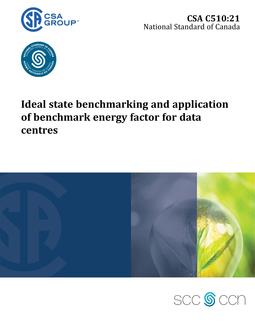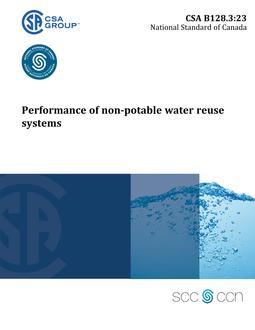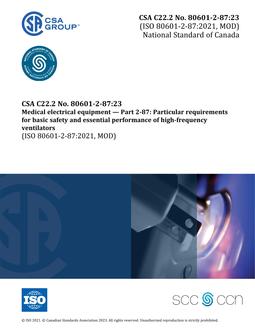
CSA C510:21
Preface
This is the first edition of CSA C510, Ideal state benchmarking and application of benchmark energy factor for data centres. This Standard applies to the use of electrical energy for data centres. CSA acknowledges that the development of this Standard was made possible, in part, by the financial support of BC Hydro, Efficiency Manitoba, Hydro Quebec, Canadian Electricity Association, Independent Electricity System Operator (IESO), Nova Scotia Department of Energy and Mines, EfficiencyOne, and NEEA.
This Standard has been developed in compliance with Standards Council of Canada requirements for National Standards of Canada. It has been published as a National Standard of Canada by CSA Group.
Scope
1.1 This Standard specifies the framework and calculation models for essential energy benchmarking of data centres as a new form of ideal-state benchmarking for energy performance. It provides the specifications necessary to benchmark the energy efficiency performance of a data centre by using a dimensionless indicator called the benchmark energy factor (BEF). This Standard is a reference document for the application of essential energy benchmarking to data centres. The essential energy model is based on best available technology (BAT) and fundamental thermal, mechanical, electrical, and/or work-load components. The BAT is determined independent of cost and, in most cases, independent of the equipment that is currently in use within a data centre that is using this Standard. Exceptions are provided for when a data centre is using IT equipment that is not covered by the essential energy models.
This Standard applies to the use of electrical energy for the data centre. Data centres that are included within the scope of this Standard include data centres with a minimum IT load of 100 kW that are typically used in enterprises, government, institutional (hospital and university), and other facilities where the organization has influence over the equipment and a vested interest in the energy consumption of the data centre. This can include third-party managed data centres when the above conditions are met.
1.2 Specifically excluded from the scope of this Standard are the following: a) colo data centres – given that the data centre operator does not usually have control over the IT equipment or the software environment; b) telco data centres – given that the majority of equipment is specialized hardware equipment that is not currently supported by the essential energy models; and c) data centres that have the cost of electricity embedded in the rent – given that there is no direct financial benefit to improving the energy efficiency of the data centre.
1.3 In this Standard, shall is used to express a requirement, i.e., a provision that the user is obliged to satisfy in order to comply with the standard; should is used to express a recommendation or that which is advised but not required; and may is used to express an option or that which is permissible within the limits of the Standard. Notes accompanying clauses do not include requirements or alternative requirements; the purpose of a note accompanying a clause is to separate from the text explanatory or informative material. Notes to tables and figures are considered part of the table or figure and may be written as requirements. Annexes are designated normative (mandatory) or informative (nonmandatory) to define their application.
Product Details
- Published:
- 06/01/2021
- ISBN(s):
- 9781488335280
- Number of Pages:
- 60
- File Size:
- 1 file , 1.2 MB
- Product Code(s):
- 2428940, 2428940


